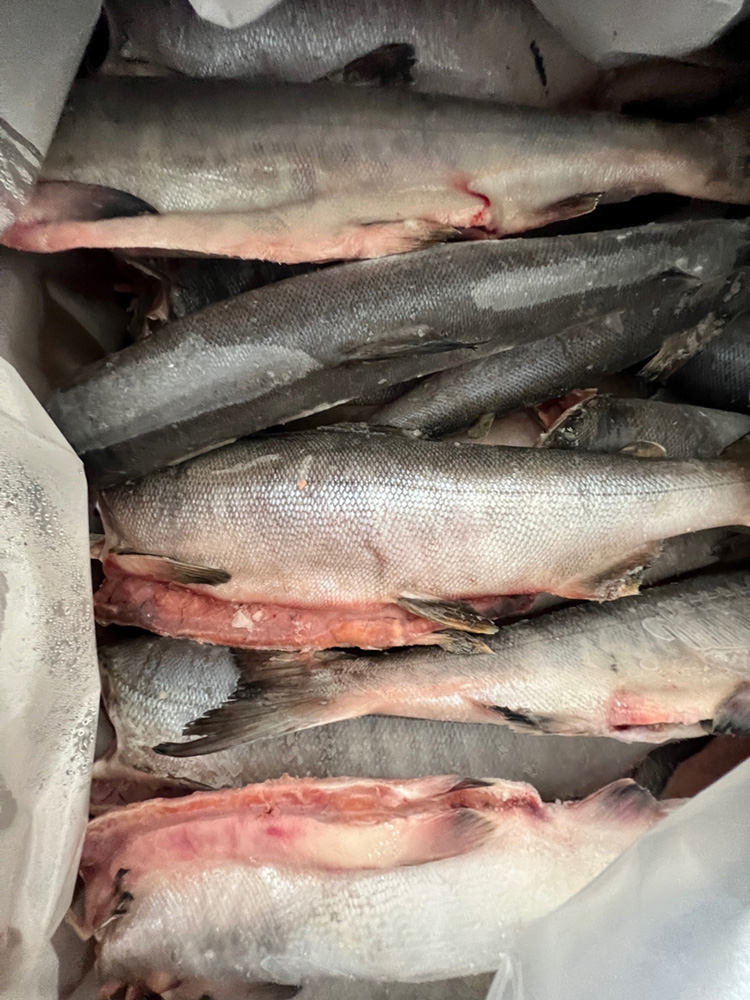
On a cool, cloudy summer day at Emmonak, on Alaska’s Lower Yukon River, not a single commercial fishing boat was delivering its catch to Kwik’Pak Fisheries.
Instead, families along the lower Yukon were awaiting delivery of state donated sockeye salmon being sent to them by Kwik’Pak, a subsidiary of the Yukon Delta Fisheries Development Association, which had received a fresh batch some 5,000 pounds of sockeyes from the state of Alaska. Another 6,800 pounds of sockeyes, also purchased by the state from a processor, were delivered to the Tanana Chiefs Conference in Fairbanks, for delivery to communities along the upper Yukon River.
The problem with the demise of Yukon River chums, known for their rich Omega-3 oils, dates back to 2020. When the fish didn’t show up, ADF&G shut down all commercial, personal use and subsistence fishing on the Yukon, Kwik’Pak General Manager Jack Schultheis said.
Since then every year has gotten worse, he commented.
“I’ve been involved in commercial fishing for 49 years on the Yukon and this situation now is at crisis level,” he said, adding that the Yukon salmon runs are on the verge of extinction and the state appears to have the attitude or policy of strong stock management that allows runs like those in the Arctic-Yukon-Kuskokwim region to be sacrificed for the benefit of strong stocks.
That is demonstrated, Schultheis remarked, by prosecuting an intercept fishery of chum salmon bound for western Alaska with Yukon and Kuskokwim rivers, Norton Sound and Kotzebue salmon all caught in the Area M June fishery.
Kiley Thompson, president of the Area M Seiners Association, said in correspondence with the Bering Sea Fishermen’s Association that the association acknowledges that the situation in the AYK is a heartbreaking one, but that the 2007-2009 Western Alaska Salmon Stock Identification Program results produced by ADF&G do not suggest that Area M fisheries are the primary or even secondary reason for poor chum returns to the AYK. Thompson said that Area M fishermen were taking voluntary actions to minimize any potential impact their harvesting may have on AYK chums.
“Salmon declines are complex and maintaining a commitment to an accurate representation of data and science is essential to ensuring that stakeholder expectations remain reasonable and management actions targeted and effective,” Thompson said. “Lastly, while we empathize with your communities and are taking significant voluntary actions to minimize impact we may have on AYK chums, we think it is important to note that lead ADF&G scientists do not believe that catch of chums in Area M, or bycatch in the Bering Sea Pollock fishery are a major contributor to AYK salmon declines.”
Thompson has not responded to a request for further comment on how well voluntary action to minimize potential impact of their harvests were having on AYK chums.
Schultheis and others also found troubling that the Marine Stewardship Council continues to certify all Alaska salmon fisheries as sustainable, when no fishing for salmon is allowed on the Yukon or Kuskokwim rivers due to low run returns.
Standards for certification by MSC are similar to those of the Responsible Fisheries Management program in Alaska, operated by the Certified Seafood Collaborative. A big issue for both in certifying whether a fishery is sustainable is not whether a fishery has a harvestable surplus every season, but whether it is managed for sustainability, which may mean shutting down a fishery until there are enough fish reproducing to allow the stock can continue indefinitely.
